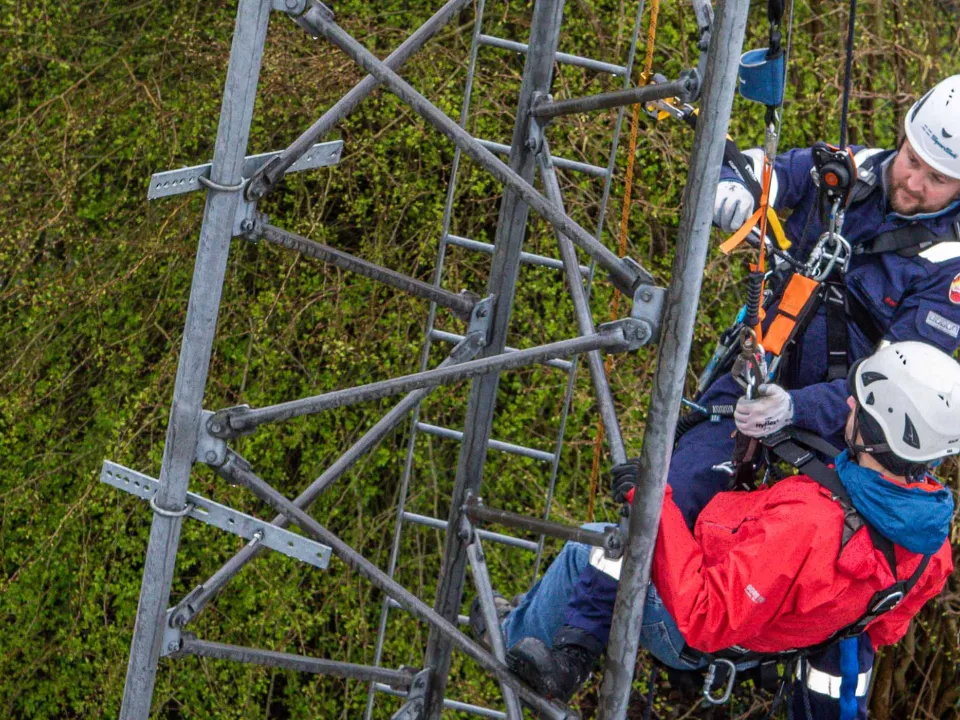Safety Harness Rescue Course (Gotcha SHARK Kit)
The day will be split into two sessions.
MORNING SESSION - Safety Harness Theory Training
Our theory foundation module including pre-use inspection. Click here for full session agenda.
AFTERNOON SESSION - Gotcha SHARK Kit Rescue
On successful completion of morning session, delegates can then progress on to the practical elements of training.
TRAINING AIMS
- Designed to make operatives fully conversant in the operation of the S.H.A.R.K. for both rescue and evacuation.
- Enable operatives to use the rescue kit to lower a casualty to ground level, or descend to a suspended casualty and perform an assisted descent to ground level.
- This technique is normally employed on Towers, Masts and Structures where direct intervention by the rescuer is necessary.
- This training is intended for operatives who are already conversant in the use of their personal fall protection equipment.
- During training delegates will be expected to carry out activities at height. This will provide an insight into the delegates’ ability to operate in such conditions. This is only an indication of their capability, as it is not possible to recreate exact working environments.
- The actual height and exposure will be set out on the certification, but this is only to show what was included in the training. The height shown on the certification is not intended to limit the height at which the delegate can operate.
COURSE SYLLABUS
Theory
- Understand the implications of being suspended in a harness and the importance of rescue provision when working at height.
- A basic understanding of the different approaches to rescue and how the rescue kit fits into a hierarchy of options, e.g. improvised planned and emergency services.
- Understanding the importance of personal safety whilst carrying out rescue.
- The importance of casualty management and the application of temporary aids.
- Post rescue care and handover to a first aider or the emergency services.
Practical
- Correct fitting and adjustment of a fall arrest harness.
- Correct use of double and/or single fall arrest lanyards for personal safety whilst traversing and rescuing.
- Identification of the key components for the rescue kit and their strengths and limitations.
- The ability to assess the situation and select the appropriate recovery technique, i.e. anchor point selection and suitable points of safety harness attachment.
- All delegates will be fully conversant with an appropriate rescue system.
- This will normally include:
- The use of a self-locking descender to abseil.
- How to free the casualty from suspension with the minimum exposure to risk.
- The use of a rescue kit containing a self-locking descender to access a casualty and evacuate them down to safety.
PRE-COURSE ENTRY REQUIREMENTS:
- Delegates must be 18 years and over.
- All delegates must be able to certify they are physically fit and have no medical conditions that might prevent them working at height prior to commencement of training. (A list of conditions that could affect practical training is available upon request. If in doubt, call our team on 01606 738529 for advice prior to booking).
- SpanSet reserves the right to exclude unsuitable delegates from training courses.
- Candidates must be competent in the use of their Personal Fall Protection Equipment.
- SpanSet Safety Harness Practical Training (formerly known as Practical Use of Personal Fall Protection Equipment) is advised for candidates with no previous experience of work at height with personal fall protection equipment.
